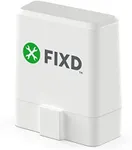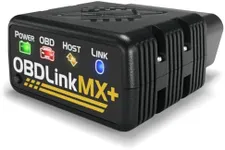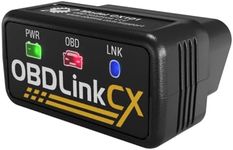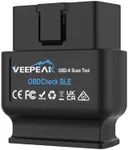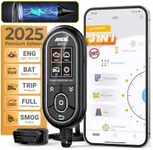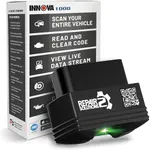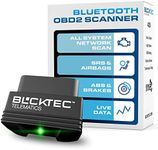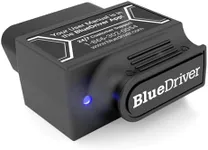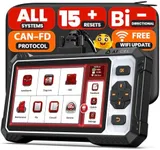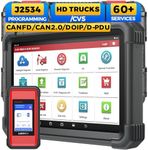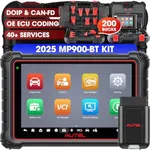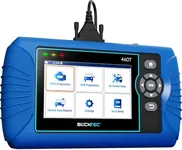Buying Guide for the Best Obd2 Bluetooth Scanner
An OBD-2 Bluetooth scanner is a handy tool for car owners and mechanics alike. It allows you to diagnose and monitor your vehicle's health by connecting to the car's onboard diagnostics system. This device can help you identify issues before they become major problems, saving you time and money on repairs. When choosing an OBD-2 Bluetooth scanner, it's important to consider several key specifications to ensure you get the best fit for your needs.CompatibilityCompatibility refers to whether the OBD-2 Bluetooth scanner can work with your vehicle's make, model, and year. This is crucial because not all scanners are universal. Some are designed for specific car brands or models, while others are more versatile. To navigate this, check the scanner's compatibility list or use a compatibility checker tool provided by the manufacturer. If you own multiple vehicles or plan to use the scanner on different cars, a more universal model might be the best choice.
Bluetooth VersionThe Bluetooth version determines the connection stability and speed between the scanner and your smartphone or tablet. Newer versions, like Bluetooth 4.0 or 5.0, offer better performance and lower power consumption. Older versions might still work but could be slower or less reliable. If you want a seamless and quick connection, opt for a scanner with the latest Bluetooth version. This is especially important if you plan to use the scanner frequently or for extended periods.
Supported ProtocolsSupported protocols refer to the different communication standards that the scanner can interpret from your vehicle's OBD-2 system. There are several protocols, such as ISO9141, KWP2000, and CAN. A good scanner should support multiple protocols to ensure it can read data from a wide range of vehicles. If you have a specific car, check which protocol it uses and ensure the scanner supports it. For general use, a scanner with broad protocol support is ideal.
App CompatibilityApp compatibility is about which smartphone or tablet applications the scanner can work with. These apps display the diagnostic information and often provide additional features like data logging and real-time monitoring. Some scanners come with their own proprietary apps, while others are compatible with popular third-party apps. Ensure the scanner you choose works with an app that is available on your device's operating system (iOS, Android) and meets your needs in terms of features and usability.
Data Reading and FeaturesData reading and features refer to the types of information the scanner can access and the additional functionalities it offers. Basic scanners can read and clear error codes, while more advanced models provide real-time data, freeze frame data, and even advanced diagnostics like ABS and SRS codes. Consider what level of detail you need. If you're a casual user, a basic model might suffice. For more in-depth diagnostics or professional use, look for a scanner with comprehensive data reading capabilities and extra features.
Ease of UseEase of use is about how user-friendly the scanner and its associated app are. This includes the setup process, interface design, and how intuitive it is to navigate through the features. A scanner that is easy to use will save you time and frustration, especially if you're not very tech-savvy. Look for reviews or demos to get a sense of how straightforward the scanner is to operate. If you're new to OBD-2 scanners, a model with a simple, clear interface and good customer support can be very helpful.
Update and SupportUpdate and support refer to the manufacturer's commitment to providing software updates and customer service. Regular updates ensure that the scanner remains compatible with new car models and can fix any bugs or add new features. Good customer support can help you troubleshoot any issues you encounter. Check if the manufacturer offers regular updates and has a reputation for responsive customer service. This is particularly important for long-term use and reliability.
